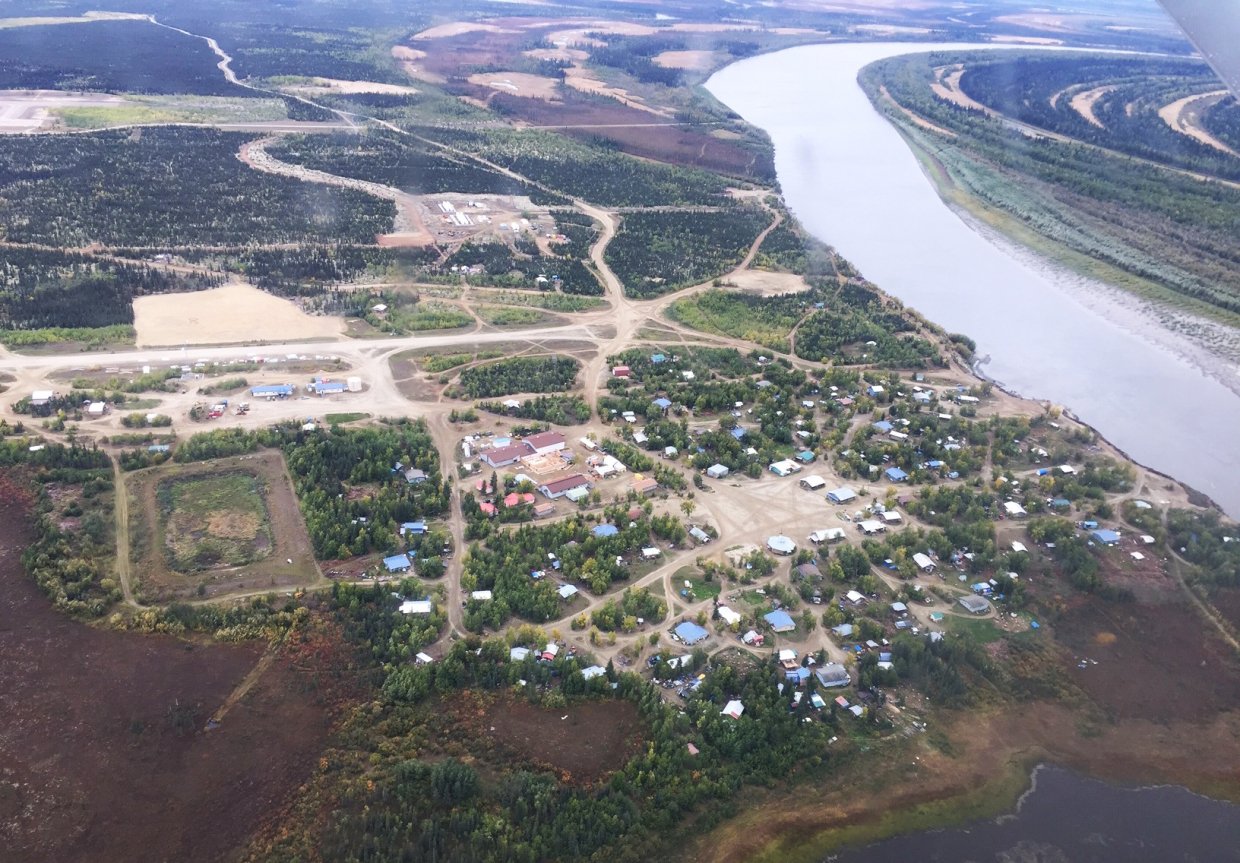Project Overview
Tribe/Awardee
Huslia Tribal Council
Location
Huslia, AK
Project Title
Huslia Tribal Council Biomass Project
Type of Application
Deployment
DOE Grant Number
DE-EE0000091
Project Amounts
DOE: $361,731
Awardee: $361,733
Total: $723,464
Project Status
See project status
Project Period of Performance
Start: September 2017
End: September 2020
NOTE: Project pages are being updated regularly to reflect changes, if any; however, some of the information may be dated.
Summary
This community-scale biomass project will heat 60% of the community's buildings, create up to 12 part-time jobs, and save $57,000 annually in heating costs. This project will significantly contribute to meeting the Huslia Tribal Council’s Renewable Portfolio Standard of achieving 25% diesel displacement in community facilities by 2025.
Project Description
Background
The Huslia Tribal Council is the federally recognized tribal government for the Huslia Athabascan indigenous peoples in the Interior region of Alaska. The total population as of 2016 is approximately 275, with 92% Alaska Native.
The project represents the next phase of a 2008 reconnaissance study supported by the Alaska Wood Energy Development Task Group and conceptual design and feasibility work in 2013 funded by the State of Alaska’s Renewable Energy Fund. Both efforts were awarded competitively and recommended that the project proceed to construction.
The planned Garn cordwood boiler technology is well-proven in Alaska, with the first such system installed in the Village of Dot Lake in the late 1990s. Currently, 14 community-scale cordwood and woodchip-fired energy projects are in operation in Alaska, representing at least 30 individual Garn units, and an additional 11 systems are in the design and construction phases.
This project is consistent with the Huslia Traditional Council’s goal of supplying 25% of the Community’s energy from renewable sources as stated in Tribal Resolution 17-01, and it will build from the initial work to complete the design and construction of a biomass heating system to serve the community.
Project Objectives and Scope
The objectives of the proposed project are as follows:
- Cost Reduction. Displace approximately 75% of the fuel oil used to heat the facilities (approximately 23,000 gallons/year) with local, sustainably harvested woody biomass. Fuel cost savings over the 25-year life of the project are estimated at approximately $2.5 million.
- Carbon Reduction. Reduce greenhouse gas by approximately 4,737 tons of carbon dioxide over the life of the project.
- Community Resiliency. Enhance self-sufficiency and technical capabilities of Huslia residents by reducing money exported from the community for fuel oil and providing training for system operators and fuel harvesters.
- Economic Development. Create about six to eight part-time jobs for wood harvesters, about two part-time jobs for boiler operators, and about two part-time jobs at the school.
The scope of the proposed project consists of the final design, construction, and operation of a wood-fired district heating system that serves the community clinic, washeteria, and the K-12 school. More specifically, the system will comprise the following:
- Three GARN 2000 Wood Heating System cordwood boilers with a total maximum output of 600,000 Btu/hour located in a prefabricated steel building on a concrete slab foundation adjacent to the clinic and washeteria;
- About 700 feet round-trip of direct-bury insulated hydronic distribution pipe;
- A fenced wood yard and covered fuelwood storage;
- Modifications to end-user building heating systems for tie-in of the new district heating system to the existing oil-fired hydronic systems;
- Mechanical system including heat exchangers, pumps, metering, and controls; and
- Electrical system.
Project Location
Huslia is located deep in Interior Alaska on the north bank of the Koyukuk River and within the Koyukuk National Wildlife Refuge, about 290 air miles west of Fairbanks. There are no roads in or out of the community, which can only be accessed by air (year round), river (summer), or snow machine or dog team (winter). The health clinic and washeteria/water-treatment facility, which will be served by the project, are clustered together in a central part of the Community and adjacent to a plot of City land that will be transferred to the HTC.
Project Status
The project is complete. For details, see the final report and project status reports.
The project was competitively selected under the DOE Office of Indian Energy Fiscal Year 2016 funding opportunity announcement “Deployment of Energy Efficiency and Clean Energy on Indian Lands – 2017” (DE-FOA-0001660) and started in September 2017.

Old Ways Fuel Future Vision, Local Economy for Alaska Native Village

